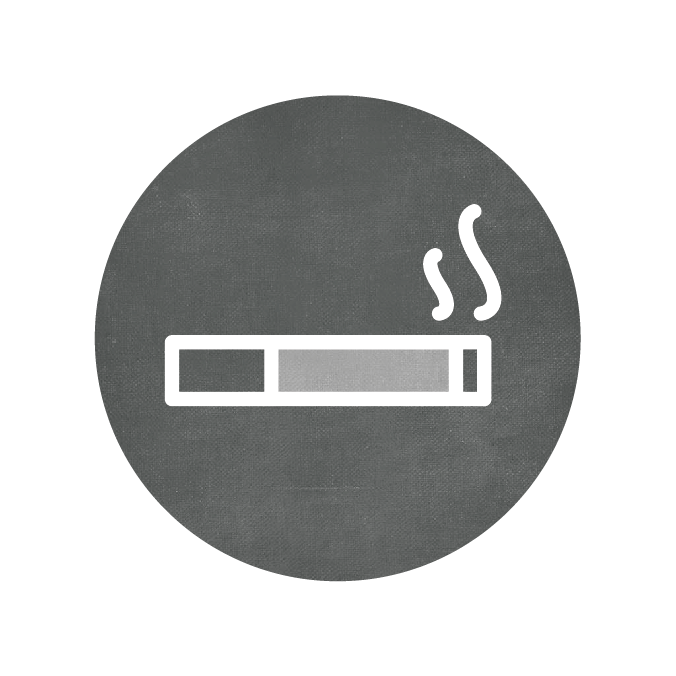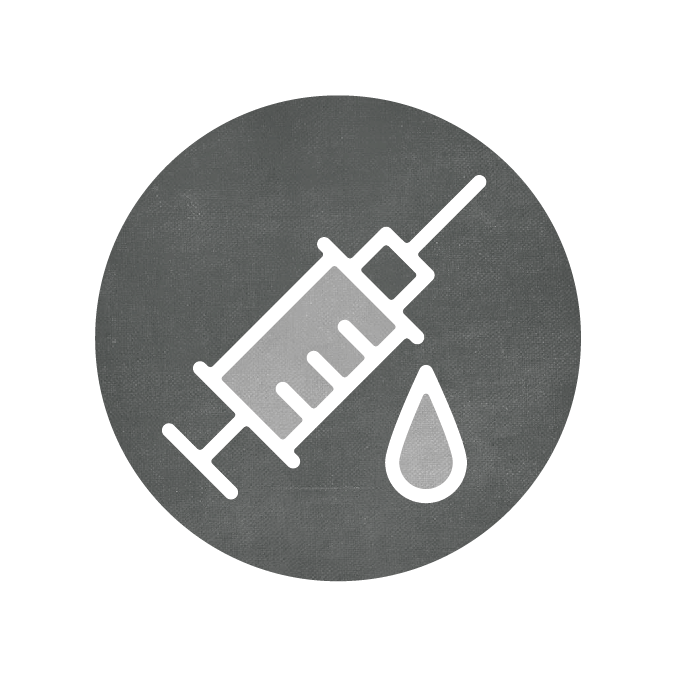How Alcohol and Drug Use Impacts Health
Alcohol and drug misuse can have serious negative effects on both physical and mental health. Chronic substance misuse can lead to liver damage, cardiovascular problems, and compromised immune function. Substance misuse increases the risk of accidents and injuries and is associated with higher levels of violence and crime, including domestic violence and child abuse. Long-term drug and alcohol use can result in addiction, further exacerbating health issues and impacting employment, relationships, and overall well-being. Effectively addressing substance misuse and addiction requires comprehensive prevention strategies at both individual and community levels, alongside treatment, recovery, and support services.
Opioid Overdose Death Rates
Why this is important: Opioids refer to drugs like heroin, oxycodone, hydrocodone, and fentanyl, which can either be prescription drugs or illegal substances. Opioid overdoses cause significant harm to communities, resulting in loss of life, burdening families, and overwhelming the healthcare and emergency response systems. Addressing opioid overdoses requires prevention, treatment, and harm reduction measures aimed at saving lives and improving health outcomes. Opioid overdose deaths do not include non-fatal overdoses and, therefore, represent only a fraction of all opioid overdoses. The Healthy People 2030 national target is 13.1 per 100,000.
Definition: Number of opioid overdose deaths per 100,000 people (age-adjusted)

Trend: The opioid-related morality rate in Whatcom County has been increasing significantly since 2019.

Geography: The opioid-related mortality rate in Whatcom County was similar to the rate in Washington state for 2021-2022.

Disparities: Disparities exist for opioid-related deaths between sexes and age groups. Hover over the data in the subpopulation tabs to discover more.
Learn more:
- Whatcom Overdose Prevention, Whatcom County Health and Community Services.
- Whatcom Has Hope, Whatcom County Health and Community Services.
- Opioid Data, WA State Department of Health.
- Understanding the Opioid Overdose Epidemic, Centers for Disease Control and Prevention.
Drug Overdose Death Rate
Why this is important: Drug overdoses have a profound impact on communities, causing loss of life, fractured families, and overwhelming strain on the healthcare system. The underlying factors that can lead to a drug overdose are complex and often involve a range of social and environmental factors. To address drug overdoses effectively, it’s important to implement comprehensive strategies that include prevention, access to treatment, and community support services. Drug overdose deaths do not include non-fatal overdoses and, therefore, represent only a fraction of all drug overdoses. The Healthy People 2030 national target is 20.7 per 100,000.
Definition: Number of drug-related deaths per 100,000 people (age-adjusted)

Trend: The drug-related morality rate in Whatcom County has been increasing significantly since 2018.

Geography: The drug-related mortality rate in Whatcom County was similar to the rate in Washington state in 2022.

Disparities: Disparities exist for drug-related deaths between sexes and age groups. Hover over the data in the subpopulation tabs to discover more.
Learn more:
- Opioid and Drug Use Data Dashboard, WA State Department of Health.
- Drug Overdose Death Rates, National Institute on Drug Abuse, 2024.
- The Overdose Response Strategy: Reducing Drug Overdose Deaths Through Strategic Partnership Between Public Health and Public Safety, Journal of Public Health Management and Practice, 2022.
Adult Binge Drinking
Why this is important: Binge drinking is the most common type of excessive alcohol use in the U.S. It is a serious public health issue associated with many negative health outcomes, such as accidents and injuries, as well as societal issues like violence and crime. Understanding binge drinking patterns can help our community create targeted interventions and solutions. The Healthy People 2030 national target is 25.4%.
Definition: Percent of adults who report binge drinking on at least one day in the past 30 days

Trend: The percent of adults in Whatcom County who report binge drinking increased significantly between 2021 and 2022. This is inline with an increase statewide.

Geography: The percent of adults who report binge drinking in Whatcom county appears slightly higher than that across Washington State. However, there is no significant difference between Whatcom County and WA State.

Disparities: Among adults who report binge drinking in Whatcom County, disparities were found for age and sex. Hover over the data in the subpopulation tabs to discover more.
Learn more:
- Drinking Levels Defined, National Institute on Alcohol Abuse and Alcoholism, 2023.
- Understanding Binge Drinking, National Institute on Alcohol Abuse and Alcoholism.
- Data on Excessive Drinking, Centers for Disease Control and Prevention.
Youth Alcohol Use
Why this is important: Youth alcohol use can negatively affect teenagers’ health and overall well-being. Starting to drink alcohol at a young age can disrupt school performance, impact decision-making abilities, and interfere with healthy brain development. Alcohol use during adolescence can increase the likelihood of developing alcohol dependence or other substance use disorders later in life. The Healthy People 2030 national target is 6.3% (adolescents aged 12 to 17 years).
Definition: Percent of 10th grade students in Whatcom County who report consuming alcohol in the past 30 days

Trend: Between 2012-18, the percent of youth who report consuming alcohol in the past 30 days in Whatcom County did not change significantly. During the COVID-19 Pandemic the percent of youth reporting alcohol consumption was reported 10%. Caution should be used when interpreting 2021 survey data until further data is available.

Geography: The percent of youth who report consuming alcohol in the past 30 days in Whatcom County is similar to that across Washington State.

Disparities: In 2021, among youth in Whatcom County who report consuming alcohol in the past 30 days, a disparity exists for gender identity.
Learn more:
- Whatcom Families
- Whatcom Prevention Coalitions, Whatcom County Health and Community Services.
- State Report on Underage Drinking Prevention and Enforcement, Substance Abuse and Mental Health Services Administration (SAMHSA), 2022.
- Get the Facts about Underage Drinking, National Institute on Alcohol Abuse and Alcoholism, 2024.
Youth Binge Drinking
Why this is important: Binge drinking is the most common type of excessive alcohol use in the U.S. It is a serious public health issue associated with many negative health outcomes, such as accidents and injuries, as well as societal issues like violence and crime. Understanding binge drinking patterns can help our community create targeted interventions and solutions.
Definition: Percent of 10th grade students who report having five or more drinks in a row over the past two weeks

Trend: Between 2016-18, the percent of 10th grade students in Whatcom County who report having five or more drinks in a row over the past two weeks rose significantly. During the COVID-19 Pandemic in 2021, the percent of 10th grade students who reported binge drinking was 5.2%. Caution should be used when interpreting 2021 survey data until further data is available.

Geography: The percent of 10th grade students in Whatcom County who report having five or more drinks in a row over the past two weeks is similar to that across Washington State.

Disparities: In 2021, among the 10th grade students in Whatcom County who report having five or more drinks in a row in the past two weeks, a disparity exists for sexual orientation. Hover over the data in the subpopulation tabs to discover more.
Learn more:
- Drinking Levels Defined, National Institute on Alcohol Abuse and Alcoholism, 2023.
- Teaching Your Teen About Binge Drinking, Child Mind Institute.
- Understanding Binge Drinking, National Institute on Alcohol Abuse and Alcoholism.
Youth Marijuana Use
Why this is important: Youth marijuana use can harm teenagers’ health and well-being. Early marijuana use can impact school performance, decision-making, peer and family relationships, and brain development. It is also associated with mental health issues such as depression and anxiety. Addressing youth marijuana use is vital to protecting their physical and mental health and establishing the foundation for a healthy future. The Healthy People 2030 national target is 5.8% (adolescents aged 12 to 17 years).
Definition: Percent of 10th graders who report using marijuana or hashish in the past 30 days

Trend: Between 2012-18, the percent of 10th grade students who report using marijuana or hashish in the past 30 days did not change significantly in Whatcom County. During the COVID-19 Pandemic, the percent of 10th grade students who report using marijuana or hashish was reported below 10%. Caution should be used when interpreting 2021 survey data until further data is available.

Geography: The percent of 10th grade students who report using marijuana or hashish in Whatcom County was similar to that across Washington State.

Disparities: In 2021, among 10th grade students in Whatcom County who report using marijuana or hashish, a disparity exists for sexual orientation. Hover over the data in the subpopulation tabs to discover more.
Learn more:
- Whatcom Families
- North Sound Region Youth Cannabis and Tobacco Prevention Program, Whatcom County Health and Community Services.
- Cannabis and Teens, Centers for Disease Control and Prevention.
- Cannabis Use Among Young Adults in Washington State After Legalization of Nonmedical Cannabis, American Journal of Public Health, 2022.
Youth Illicit Drug Use
Why this is important: Illicit drugs refer to illegal substances such as cocaine, heroin, and other illegal opioids. Teenagers’ use of these drugs can have a significant negative impact on their health and overall well-being. Engaging in drug use at a young age can disrupt normal brain development processes and interfere with academic performance, decision-making, and peer and family relationships. Understanding and addressing youth illicit drug use is crucial to limit both the near-term impacts and the possibility of dependency or addiction later in life. The Healthy People 2030 national target is 5.5%.
Definition: Percent of 10th grade students who report use of other illegal drugs in past 30 days (not including alcohol, marijuana, or tobacco)

Trend: Between 2014-18, the percent of 10th grade students who report using illegal drugs doubled to reach 7.4%. During the COVID-19 Pandemic the percent of students who reported using illegal drugs is reported below 2%. Caution should be used when interpreting 2021 survey data until further data is available.

Geography: In 2021, percent of 10th grade students who report using illegal drugs in Whatcom County is similar to that across Washington State.

Disparities: Available data in 2021 for this indicator do not allow for visualization or analysis by subpopulation.
Learn more:
- Whatcom Families
- Whatcom Prevention Coalitions, Whatcom County Health and Community Services.
- High Risk Substance Use Among Youth, Centers for Disease Control and Prevention.
- Reported drug use among adolescents continued to hold below pre-pandemic levels in 2023, National Institute on Drug Abuse, 2024.
Additional Resources
- Opioid and Drug Use Data Dashboard, WA State Department of Health.
- Washington State Data & Resources, Addictions, Drug and Alcohol Institute, University of Washington.
- Alcohol’s Effects on Health, National Institute on Alcohol Abuse and Alcoholism.
- Data on Excessive Drinking, Centers for Disease Control and Prevention.
- Addiction and Health, National Institute on Drug Abuse, 2022.
How to cite information or data from this website: Citation Instructions





